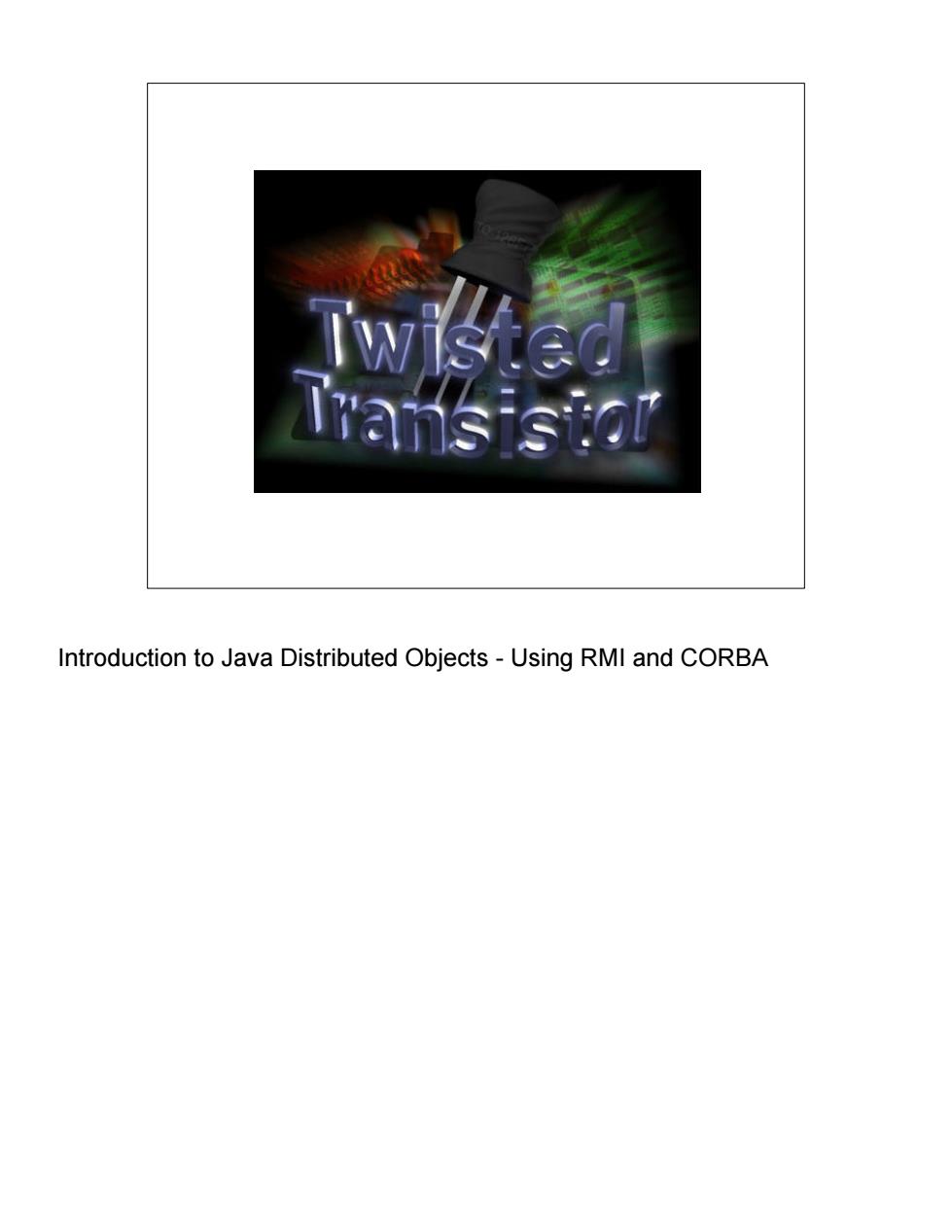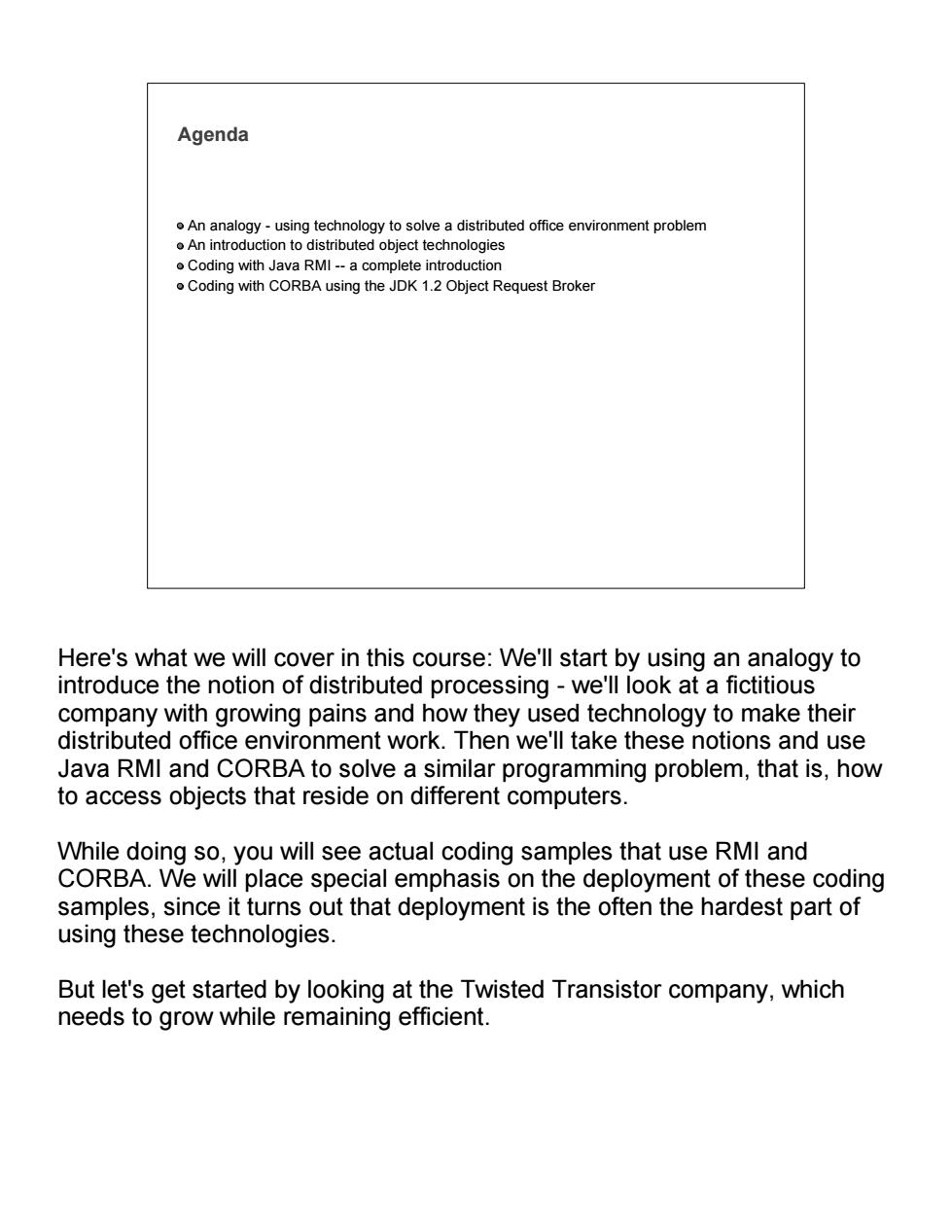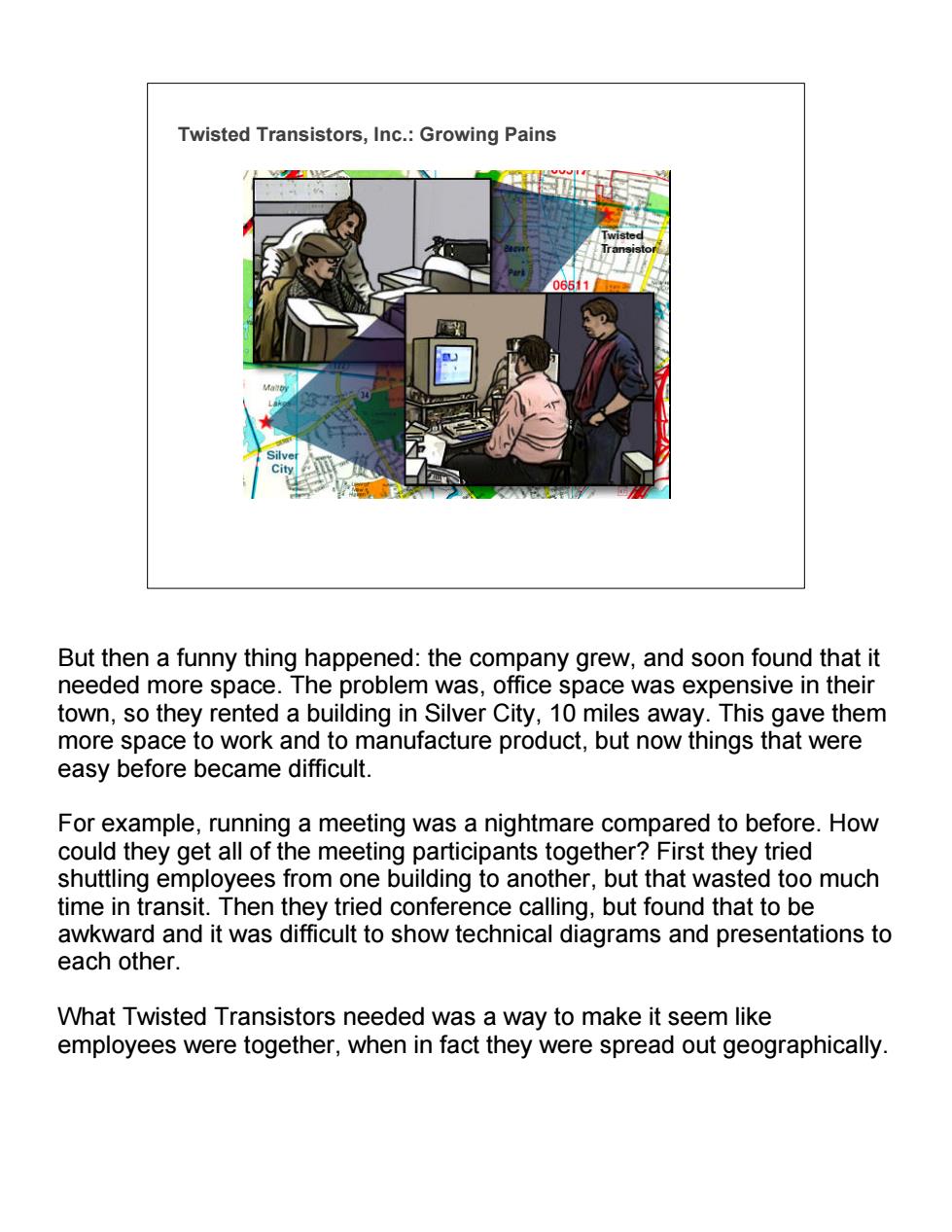
Introduction to Java Distributed Objects-Using RMI and CORBA
Introduction to Java Distributed Objects - Using RMI and CORBA

Welcome to the Course Description: Architecture (CORBA) Prerequisites: To get the most out of this course.you need to be an experienced Java programmer Objectives: When you have completed the course.you should be able to: .Contrast RMI and CORBA both at the conceptual and technical levels .Write simple RMI and CORBA programs using the Java Development Kit (JDK) version 1.2 Welcome to the Java distributed objects course!Before we start.let's cover a few details.First of all,what should your background be?To get the most out the course,you already be a pretty good Java programmer.We will not cover any Java syntax.In particular,you should be comfortable with the notions of classes,interfaces,applications and applets.You don't need any background in distributed objects,however. When you finish the course,you should have a pretty good idea about how distributed objects work in Java.You should also be able to code simple programs using either RMI or CORBA. Now on to our agenda!
Welcome to the Course Description: This course introduces how to program distributed objects using Java Remote Method Invocation (RMI) and using the Common Object Request Broker Architecture (CORBA) Prerequisites: To get the most out of this course, you need to be an experienced Java programmer Objectives: When you have completed the course, you should be able to: Contrast RMI and CORBA both at the conceptual and technical levels Write simple RMI and CORBA programs using the Java Development Kit (JDK) version 1.2 Welcome to the Java distributed objects course! Before we start, let's cover a few details. First of all, what should your background be? To get the most out the course, you already be a pretty good Java programmer. We will not cover any Java syntax. In particular, you should be comfortable with the notions of classes, interfaces, applications and applets. You don't need any background in distributed objects, however. When you finish the course, you should have a pretty good idea about how distributed objects work in Java. You should also be able to code simple programs using either RMI or CORBA. Now on to our agenda!

Agenda using technol to solve a distributed office environment problem Coding with Java RMI--a complete introduction Coding with CORBA using the JDK 1.2 Object Request Broker Here's what we will cover in this course:We'll start by using an analogy to introduce the notion of distributed processing-we'll look at a fictitious company with growing pains and how they used technology to make their distributed office environment work.Then we'll take these notions and use Java RMI and CORBA to solve a similar programming problem,that is,how to access objects that reside on different computers. While doing so,you will see actual coding samples that use RMI and CORBA.We will place special emphasis on the deployment of these coding samples,since it turns out that deployment is the often the hardest part of using these technologies. But let's get started by looking at the Twisted Transistor company,which needs to grow while remaining efficient
Agenda An analogy - using technology to solve a distributed office environment problem An introduction to distributed object technologies Coding with Java RMI -- a complete introduction Coding with CORBA using the JDK 1.2 Object Request Broker Here's what we will cover in this course: We'll start by using an analogy to introduce the notion of distributed processing - we'll look at a fictitious company with growing pains and how they used technology to make their distributed office environment work. Then we'll take these notions and use Java RMI and CORBA to solve a similar programming problem, that is, how to access objects that reside on different computers. While doing so, you will see actual coding samples that use RMI and CORBA. We will place special emphasis on the deployment of these coding samples, since it turns out that deployment is the often the hardest part of using these technologies. But let's get started by looking at the Twisted Transistor company, which needs to grow while remaining efficient

Twisted Transistors,Inc.:the Beginning Once upon a time.Jill and Bill started a new company named Twisted Transistor,Inc.to manufacture LCD panels for laptop computers.At the beginning,with only a few people in the company,and only one building,life was easy.When they needed to meet,they just walked over to someone's office and hashed things out.All of their work was done at one location,and communication was simple
Twisted Transistors, Inc. : the Beginning Once upon a time, Jill and Bill started a new company named Twisted Transistor, Inc. to manufacture LCD panels for laptop computers. At the beginning, with only a few people in the company, and only one building, life was easy. When they needed to meet, they just walked over to someone's office and hashed things out. All of their work was done at one location, and communication was simple

Twisted Transistors,Inc.:Growing Pains But then a funny thing happened:the company grew,and soon found that it needed more space.The problem was,office space was expensive in their town,so they rented a building in Silver City,10 miles away.This gave them more space to work and to manufacture product,but now things that were easy before became difficult. For example,running a meeting was a nightmare compared to before.How could they get all of the meeting participants together?First they tried shuttling employees from one building to another,but that wasted too much time in transit.Then they tried conference calling,but found that to be awkward and it was difficult to show technical diagrams and presentations to each other. What Twisted Transistors needed was a way to make it seem like employees were together,when in fact they were spread out geographically
Twisted Transistors, Inc.: Growing Pains But then a funny thing happened: the company grew, and soon found that it needed more space. The problem was, office space was expensive in their town, so they rented a building in Silver City, 10 miles away. This gave them more space to work and to manufacture product, but now things that were easy before became difficult. For example, running a meeting was a nightmare compared to before. How could they get all of the meeting participants together? First they tried shuttling employees from one building to another, but that wasted too much time in transit. Then they tried conference calling, but found that to be awkward and it was difficult to show technical diagrams and presentations to each other. What Twisted Transistors needed was a way to make it seem like employees were together, when in fact they were spread out geographically